Artist Spotlight, History Of Comics
Top 10 Comic Book Cover Swipes
by Joshua H. Stulman
Originality in the comic industry is pretty hard to find. After all how many times can you put a character in tights and a cape, make him super strong and fly and have it NOT be Superman! Even Stan Lee is not exempt from stealing others Comic Super-Hero Ideas (Click Here to read this article).
But one topic that is often argued and debated on the art side of comics is the idea of “Swipe” vs “Homage.” Just like ideas are recycled, so too is artwork. Artwork can be reused by others because an artist needed a reference for an image, was under a tight deadline and saw tracing others work as an easy way out, or because they were told to copy a more successful artist’s style. In these situations, the original artist is never given credit. The copyist claims the credit for the artwork as original, which is commonly called a “Swipe.” Swipes don’t always happen on covers, especially in the early Golden Age, artists commonly swiped individual panels. In fact, the very first Batman story from Detective Comics # 27 is full of swipes by Bob Kane from other artists!
On the other hand, comic book artists are often deeply inspired by other famous artists or artworks. Sometimes its appropriate for the content of the story to reference other famous works. When an artist uses another’s artwork to create a similar version, the new artwork is called an “Homage,” only if the original artist is given credit for their work. This is usually noted somewhere on the artwork. In “homage” artworks the credit for the original artist is always clear.
Below are our Top 10 Comic Book Swipes
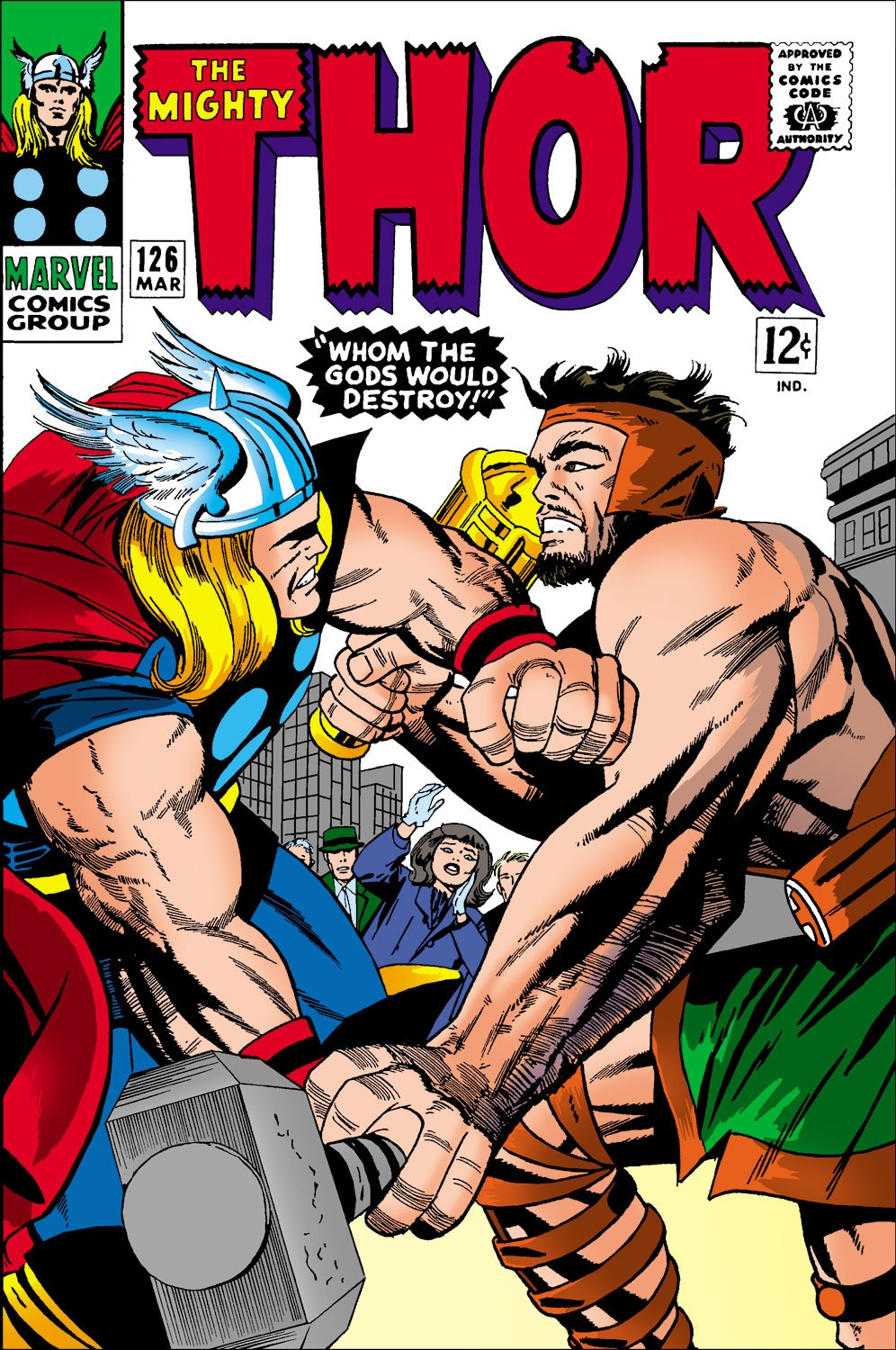
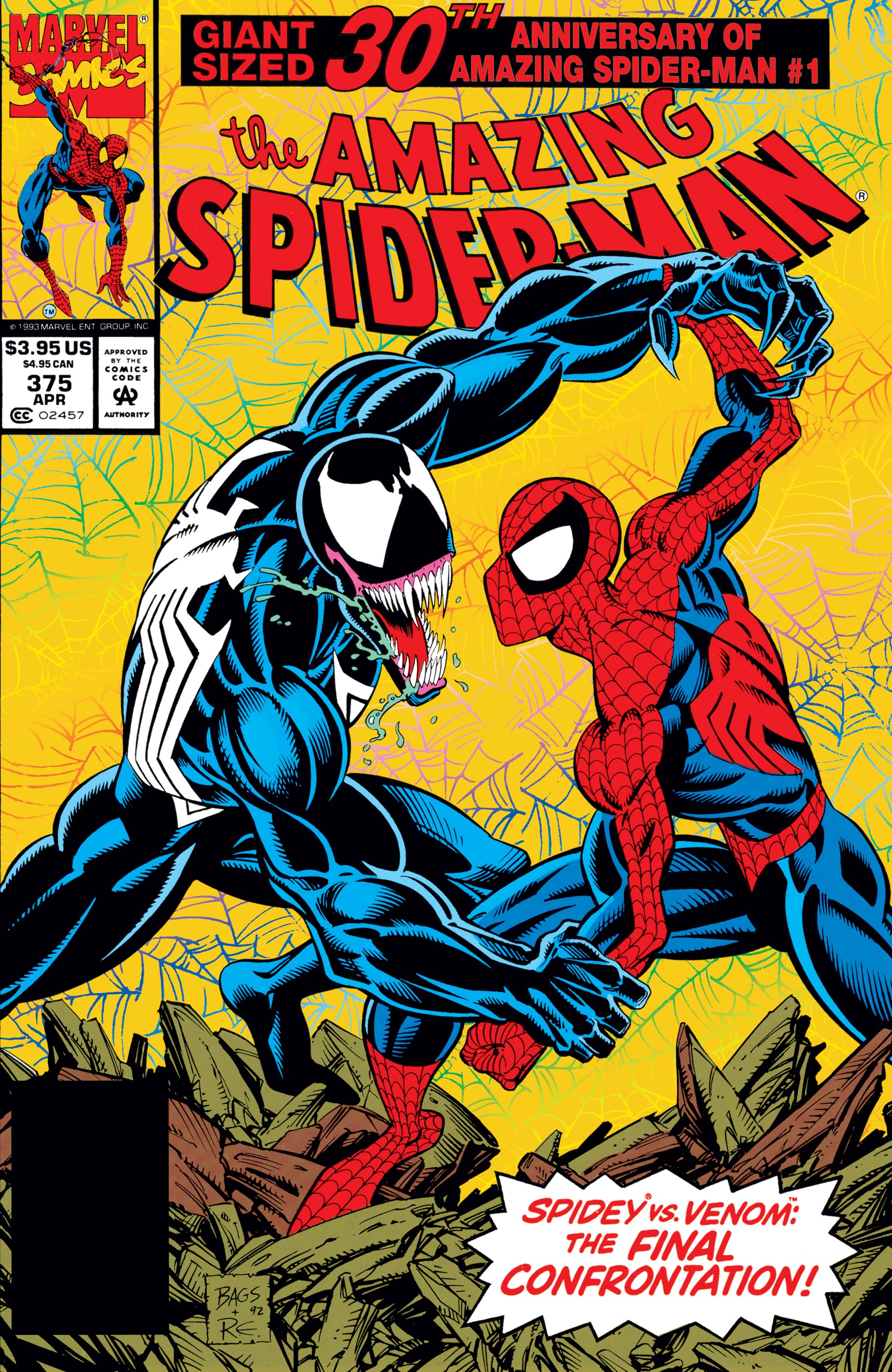
10. Thor # 126 (1966) vs Amazing Spider-Man # 375 (1993)
Jack Kirby, certainly one of the greatest artists of comics, has been imitated and copied since his earliest years in the 1940’s. People have made their entire career on imitating and copying Kirby’s artstyle. So instead of focussing on the multitude of artists and cover swipes of Jack Kirby, I thought I would focus on one of his most often swiped covers that doesn’t get much recognition. Basically, if you’re a Marvel artist and you want to show two big names going at it on the cover, Thor # 126 is your go-to cover. It’s been used countless times because it works. My favorite swipe of this composition is by Mark Bagley for Amazing Spider-Man # 375 that pitted Venom and Spider-Man. Just like in Thor’s battle with Hercules leading to Hercules becoming a hero, ASM # 375 sees Venom finally transition to anti-hero. I just wish Bags would have given some credit to the King- recognize greatness!!
9. Punisher Profile (1986) vs Rai # 0 (1992)
Bloodshot was one of the hottest super-heroes to debut in 1992. Although not in his own title, Bloodshot made his first full appearance in Rai #0, which set a history for the entire Valiant company. The cover is perhaps one of the most famous from 1992, done by Valiant co-founder and past Marvel Editor in Chief, Jim Shooter! But eagle eyed fans were quick to notice that this classic cover was nothing more than a complete swipe of Mike Zeck‘s profile illustration of the Punisher for the Marvel Universe Handbook years earlier. Shooter confirmed the swipe from Zeck, so does that mean that Mike Zeck is owed some residuals from the Bloodshot movie??
8. X-Men # 56 (1969) vs Uncanny X-Men # 135 (1980)
“You can’t crush the title! How will people know the name of the comic?!” or something like that was said to Neal Adams when he turned in his cover to X-Men # 56. It was the premiere issue of his short run on X-Men and boy what a dynamic statement. At this time, Adams artwork was shaking up the comic industry. Anything Adams did seemed to skyrocket, making him the artist of the decade. An entire school of comic artists grew up imitating Neal Adams and one of his young disciples was John Byrne. Byrne, perhaps the greatest of Neal Adam’s admirers finally did what Adams couldn’t- he went back and crushed that title!
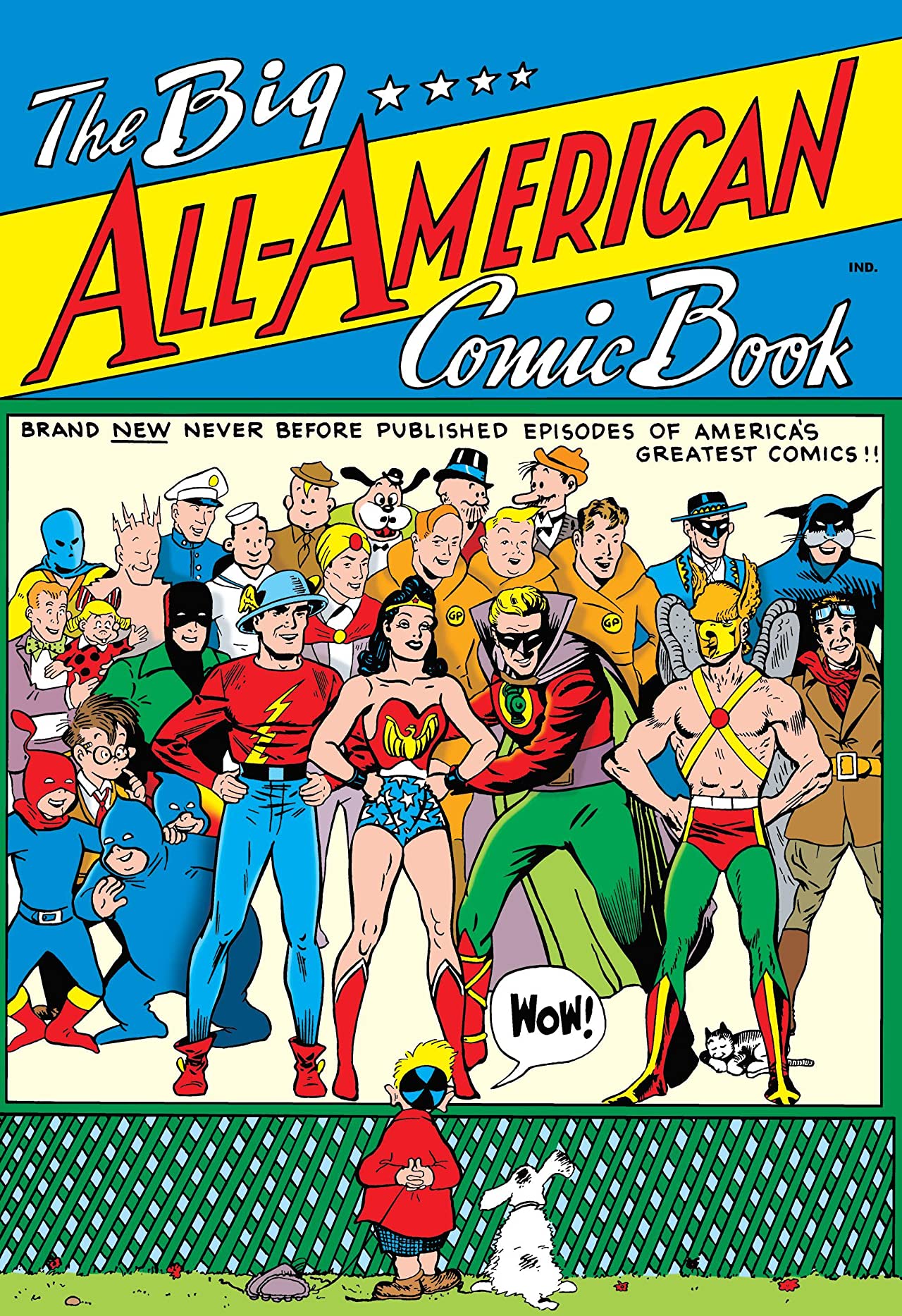
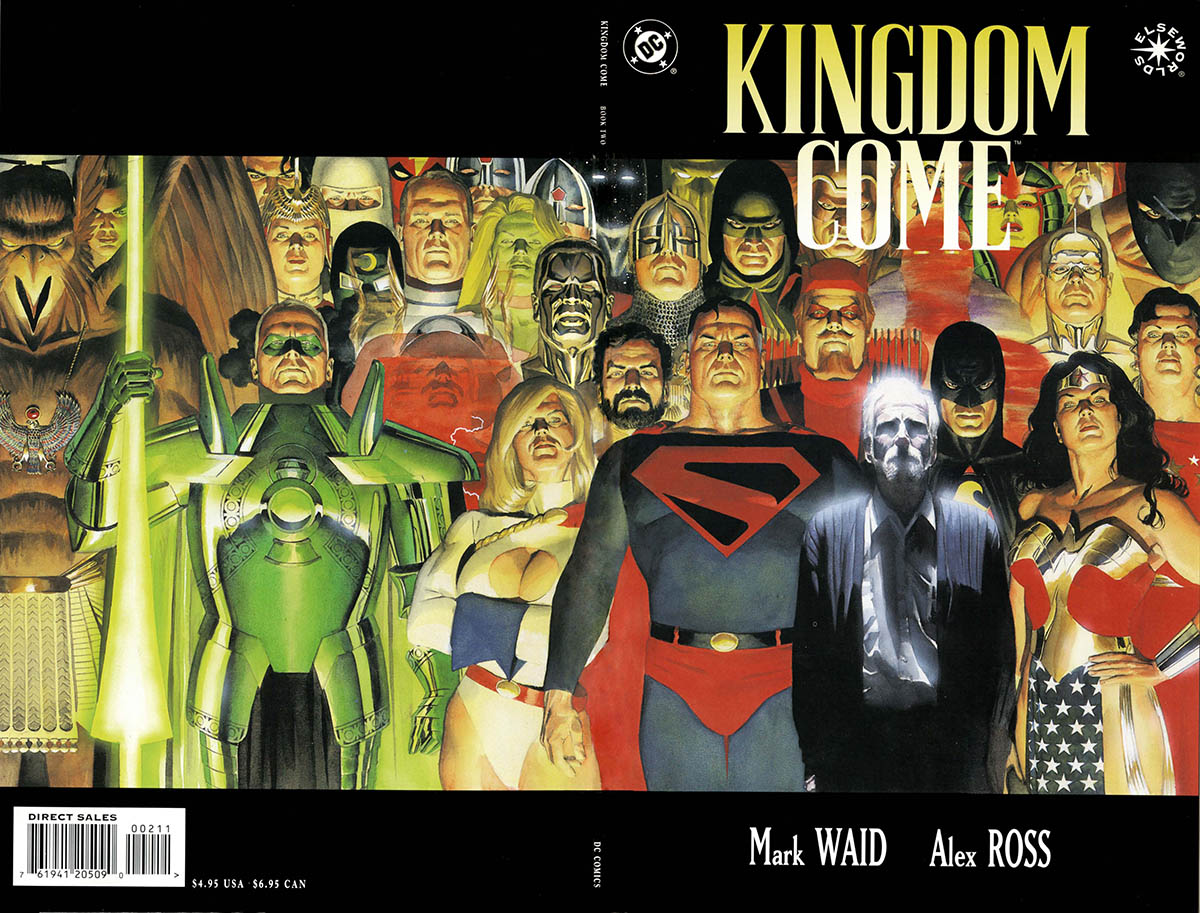
7. Big All American # 1 (1940) vs Kingdom Come # 2 (1996)
Don’t see the resemblance? Trust me its there. Alex Ross is a master at both swipe and homage. In fact he’s made a career of making paintings of famous comic book covers in general. However, he should have really known better than to swipe this image without any credit, because its such a little known cover to most comic fans that credit to the original artist wouldn’t be known by many. And as it turns out, the Big All American cover is actually a jam piece with numerous artists involved including Sheldon Mayer, Howard Purcell, Joe Kubert, Everett E. Hibbard, Martin Naydel, Harry G. Peter. You think the Kingdom Come cover comparison is stretching it? Too bad, Alex Ross fessed up to this one in a Wizard: The Guide To Comics article back in the day.
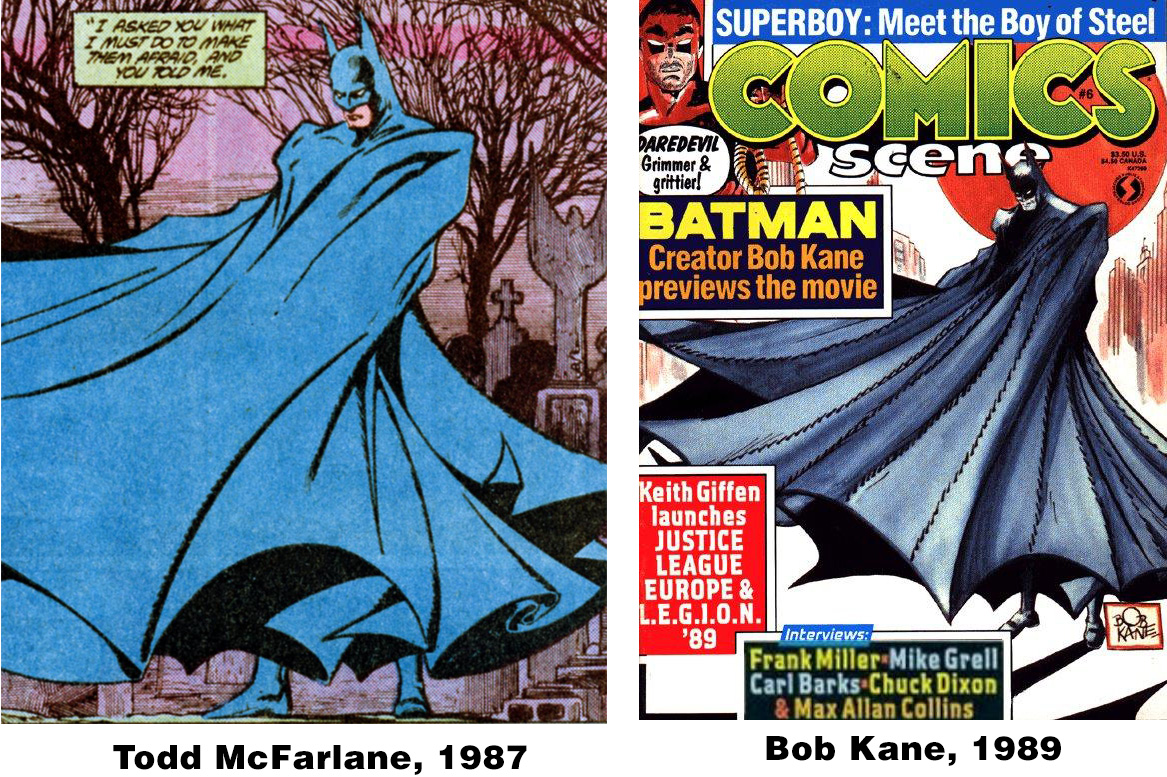
6. Detective Comics # 575 (1987) vs Comic Scene # 6 (1989)
Ok, not a cover swipe exactly. This one’s kinda weird. Todd McFarlane only did four full Batman comics in his career. In fact his work on Detective Comics # 576-578 was only a stepping stone before moving to Marvel Comics and was relatively unnoticed at the time. But two years later, McFarlane was the hottest thing in comics! He had just concluded his Incredible Hulk run and had already introduced Venom, and was well solidified as one of the greatest Spider-Man artists. Then along comes Batman creator, Bob Kane, who swipes an earlier McFarlane panel of Batman to recreate as a cover for the Comic Scene to promote the new Batman film. Kane has long had a bad reputation as a swipe artist but also for running a studio of ghost artists that were required to sign his name for their artwork. The thing is, Todd McFarlane was never part of that studio and the swipe was so obvious to fans. McFarlane even pokes fun at it when he responds with cover for Amazing Heroes # 179.
5. Leyendecker Advertising (c. 1920) vs Batman: Harley Quinn (1999)
The great master comic painter, Alex Ross, spilled the beans on this one too. Batman: Harley Quinn introduced Harley to the mainstream DC Comics continuity, effectively making it her first appearance. The cover spawned several action figures and countless merchandising items. The cover by Alex Ross has become so famous that tribute has been paid to it in the Suicide Squad (2016) Film. But alas, this famous cover is entirely based on the work of art deco master illustrator J.C. Leyendecker, specifically his numerous ads for the Arrow clothing company. Leyendecker and many of the classic art illustrators like Norman Rockwell have long had a lasting influence on Alex Ross’s artwork.
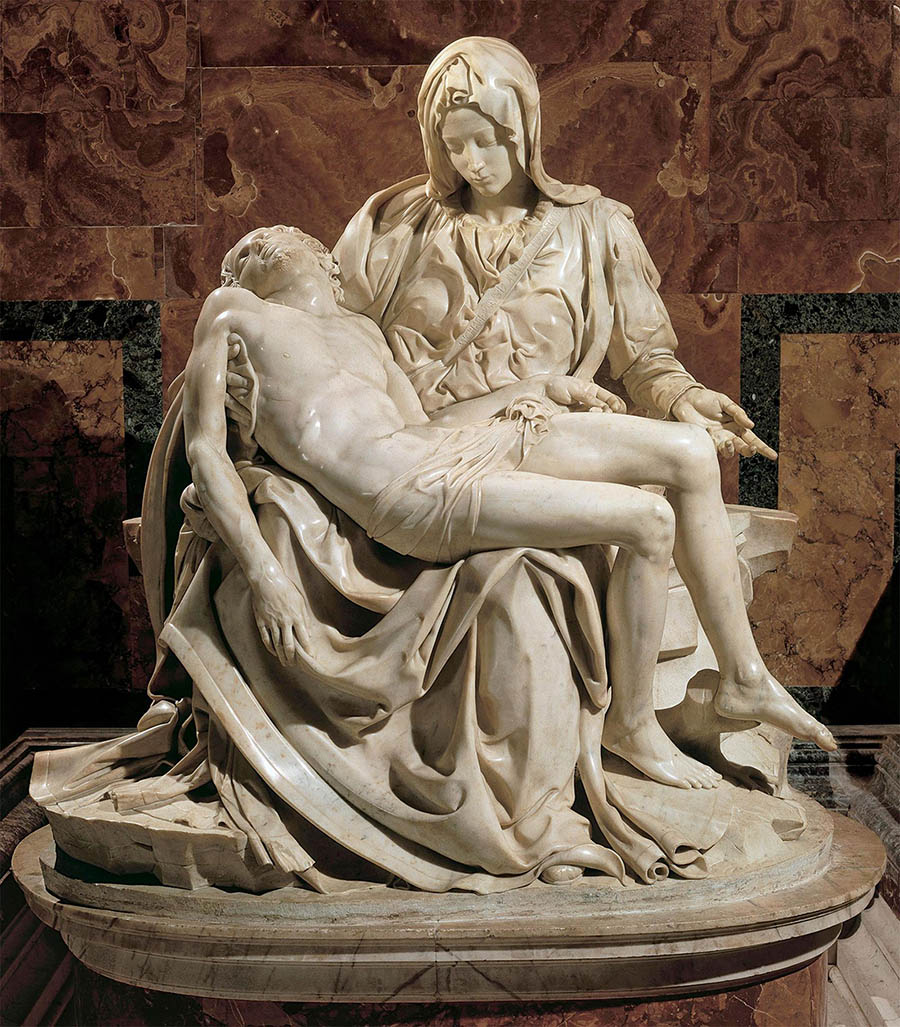
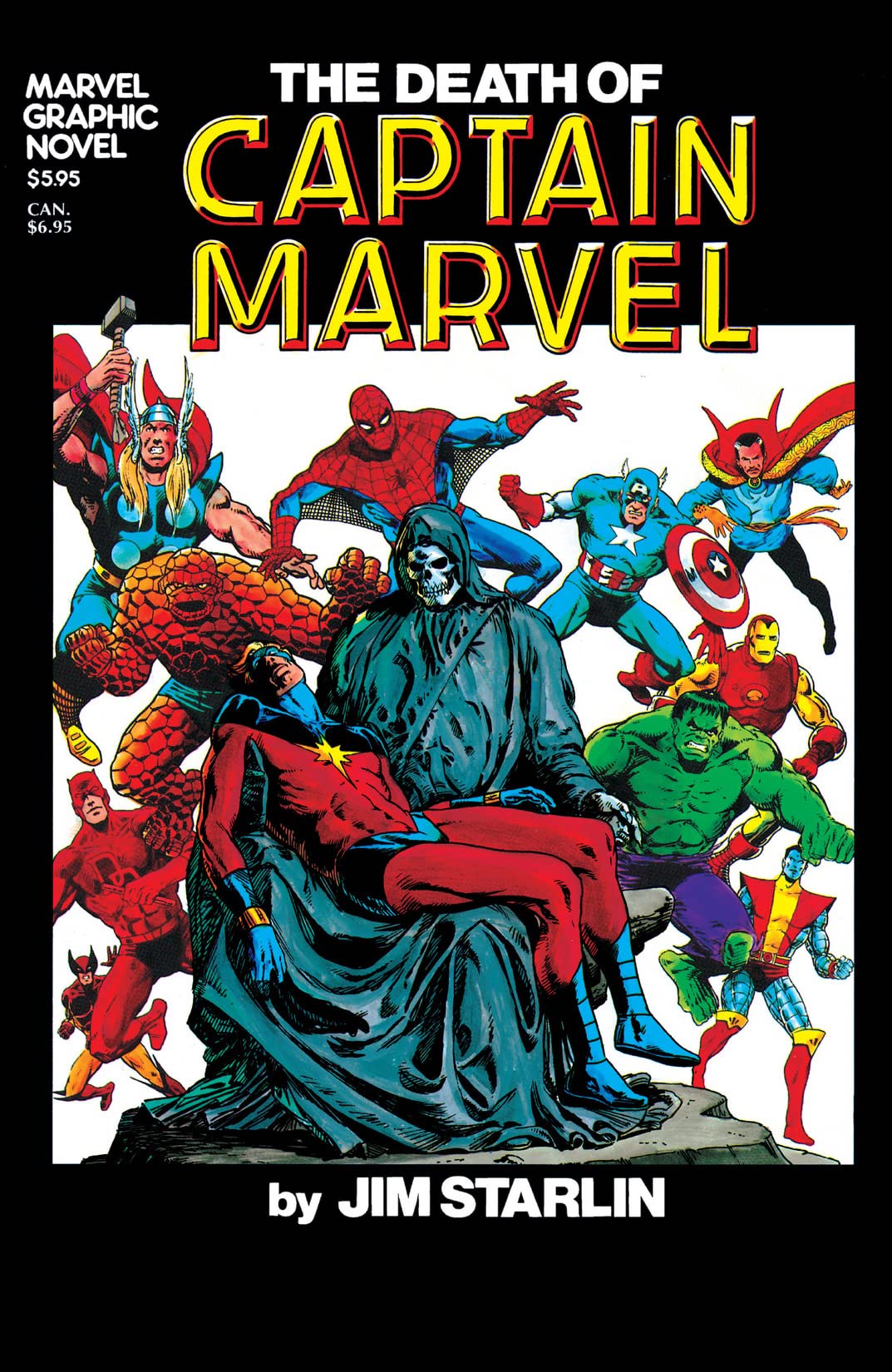
4. Pieta (1505) vs The Death of Captain Marvel (1982)
Jim Starlin hit the mark when he swiped Michelangelo’s Pieta (1505) for his Death of Captain Marvel cover. Of course the Italian masters have long influenced all artists, not just comic book illustrators. But here the swipe seems to work very well. The Death of Captain Marvel was one of the pivotal moments that affected comics. It was the first time comic fans witnessed a major super-hero die. And of all things, cancer. The story was quite poignant and deserving of a tribute from the great Renaissance master.
3. Avengers # 145 (1976) vs New Mutants # 87 (1990)
An entire book can be written about Rob Liefeld’s career in stealing comic artwork. But even for one of his most famous creations, Cable, it’s just another swipe (and with an inking assist by Todd McFarlane). This time its Gil Kane’s cover to Avengers # 145 (1976). And not only that, the character’s story itself is a derivative of the Terminator film. A soldier out of time trying to change the events in the past to spare an apocalyptic future. Sounds pretty familiar…oh yeah and he’s got a glowing eye and bionic parts!
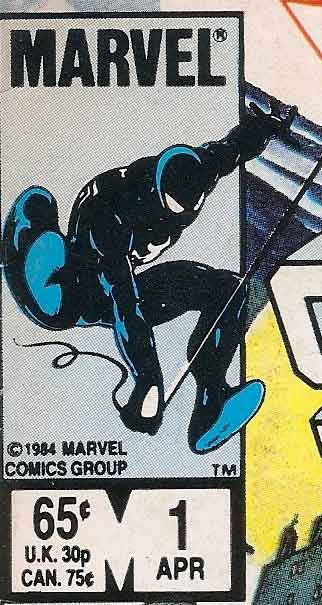
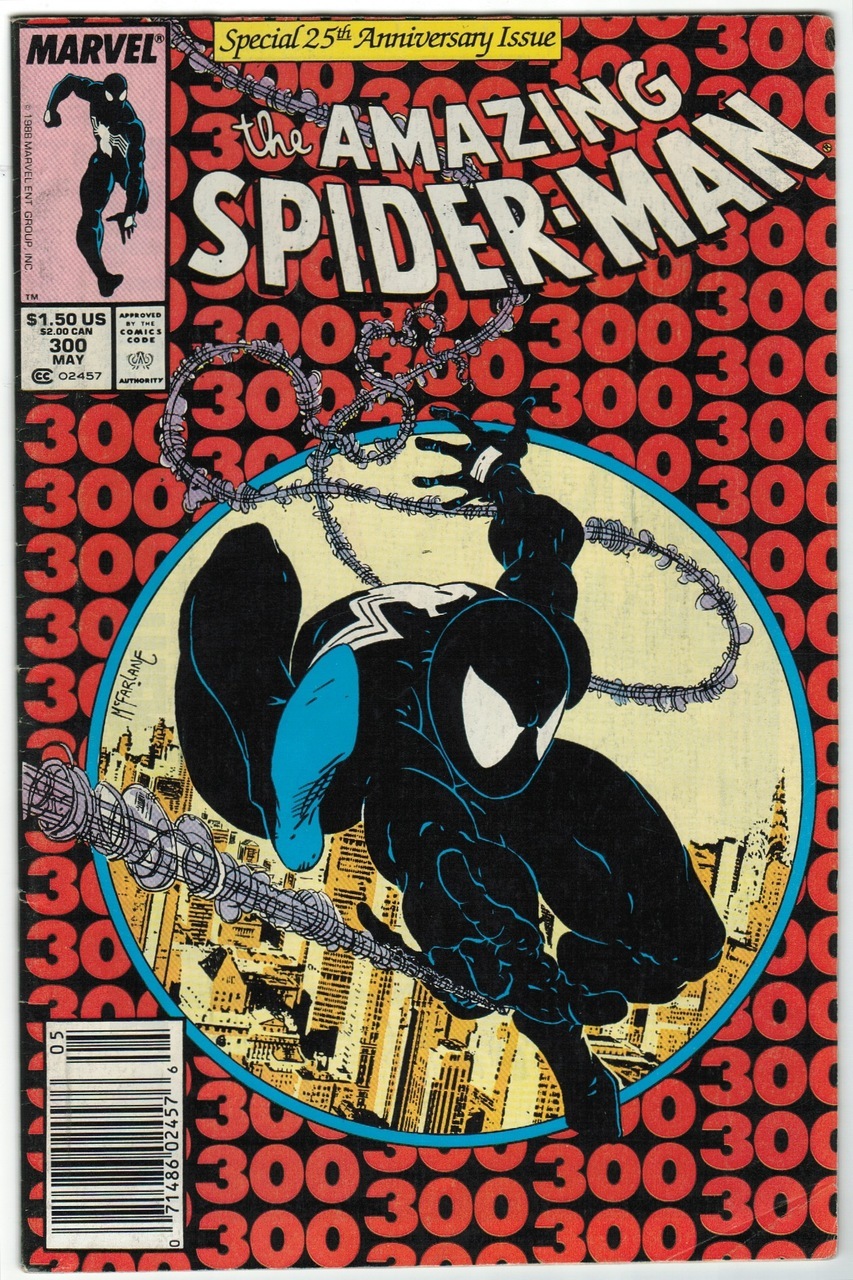
2. Web of Spider-Man Logo (1985) vs Amazing Spider-man # 300 (1988)
Oh man, Todd! Say it ain’t so. I guess you really can’t complain about Bob Kane stealing a Batman image if one of you’re most famous images in your career is a swipe from the logo to Web of Spider-Man. What can really be said here. McFarlane has been known for producing homages of his own Marvel/DC covers for Spawn but this is the exact opposite. Just like in the New Mutants both for Cable (New Mutants#87) but also the Vulture and Rusty cover for (New Mutants # 86), no credit is ever given to the original artist. This swipe was starring me in the face for years, and I just never saw it.
1. Roller Ball Movie Poster (1975) vs Infinity Gauntlet # 1 (1991)
That’s right, Thanos likes Rollerball! The iconic Infinity Gauntlet cover by George Perez is nothing more than a derivative of Bob Peak’s movie poster for Rollerball (1975). There is nothing about the movie or story that relates to Perez’s famous comic cover. What a swipe! No accreditation to Bob Peak, who is considered by many the father of modern movie posters. Peak’s movie posters span almost 50 years and includes films like West Side Story, Superman, Star Trek, Apocalypse Now and many more. His illustrations credits also include dozens of magazine cover for the likes of Time and Life, as well as Travel poster campaigns for the World’s Fair and over 30 stamps for US Post Office.
There are tons of Swipes and Homage comic covers out there! Maybe we’ll do a top ten for best homage covers next?
Let us know your favorite in the comments below!
Joshua H. Stulman
Owner, Brooklyn Comic Shop


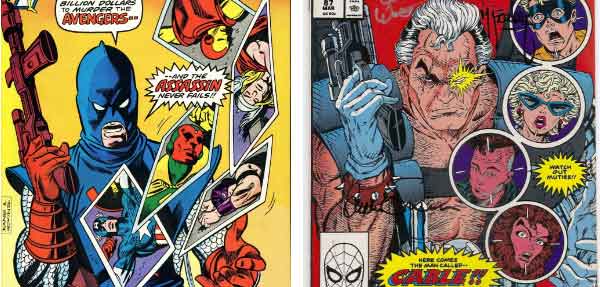
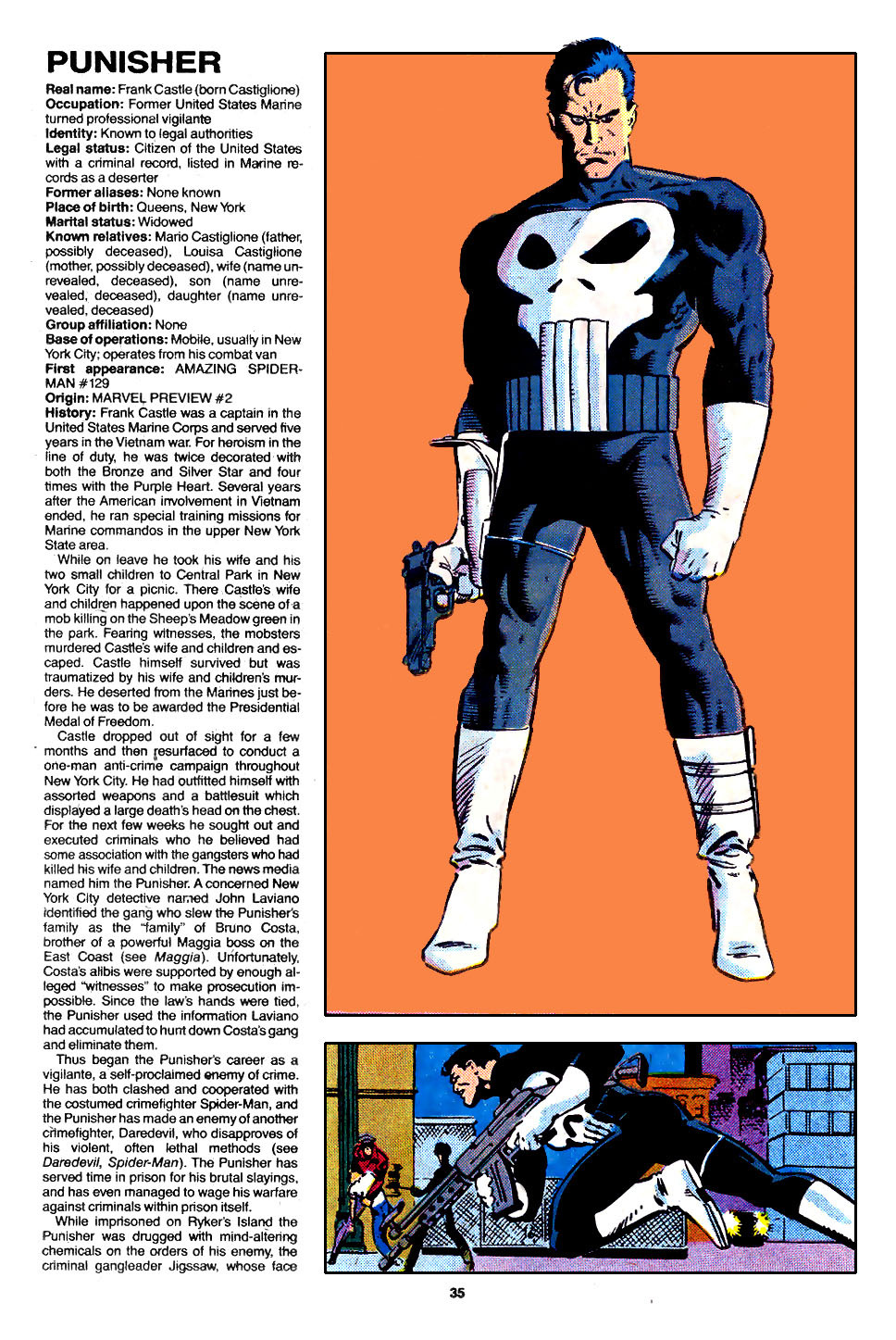
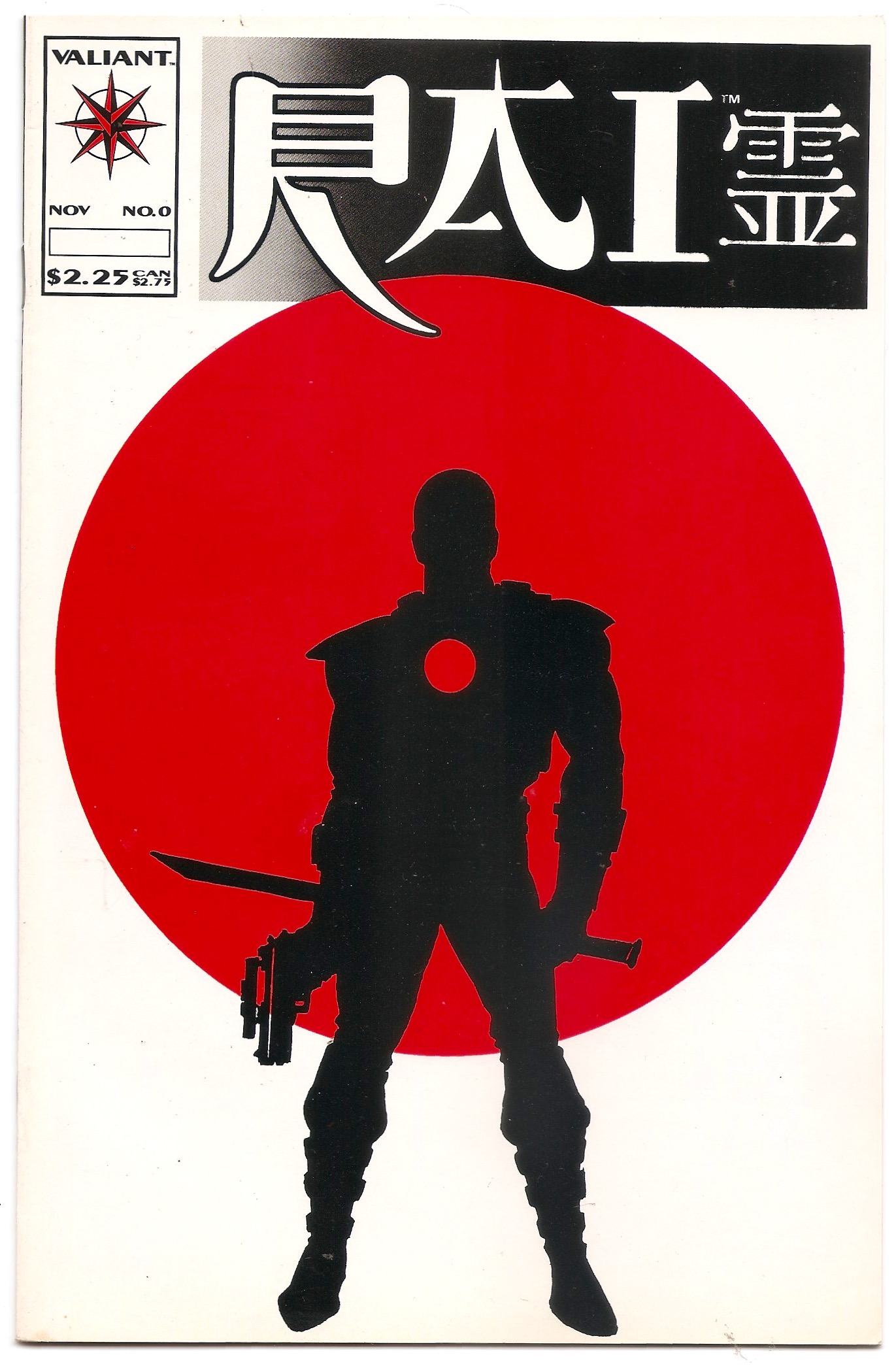
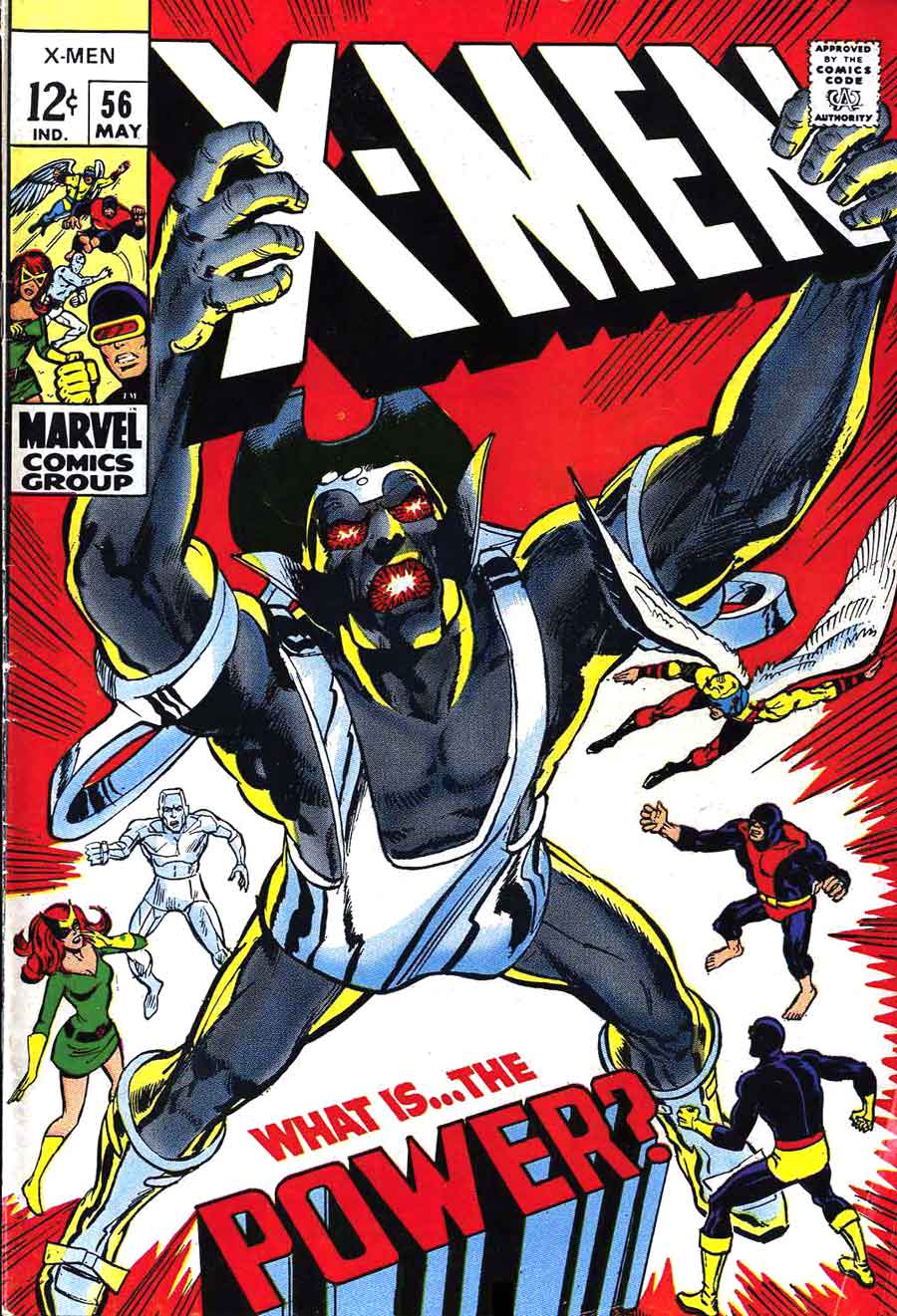
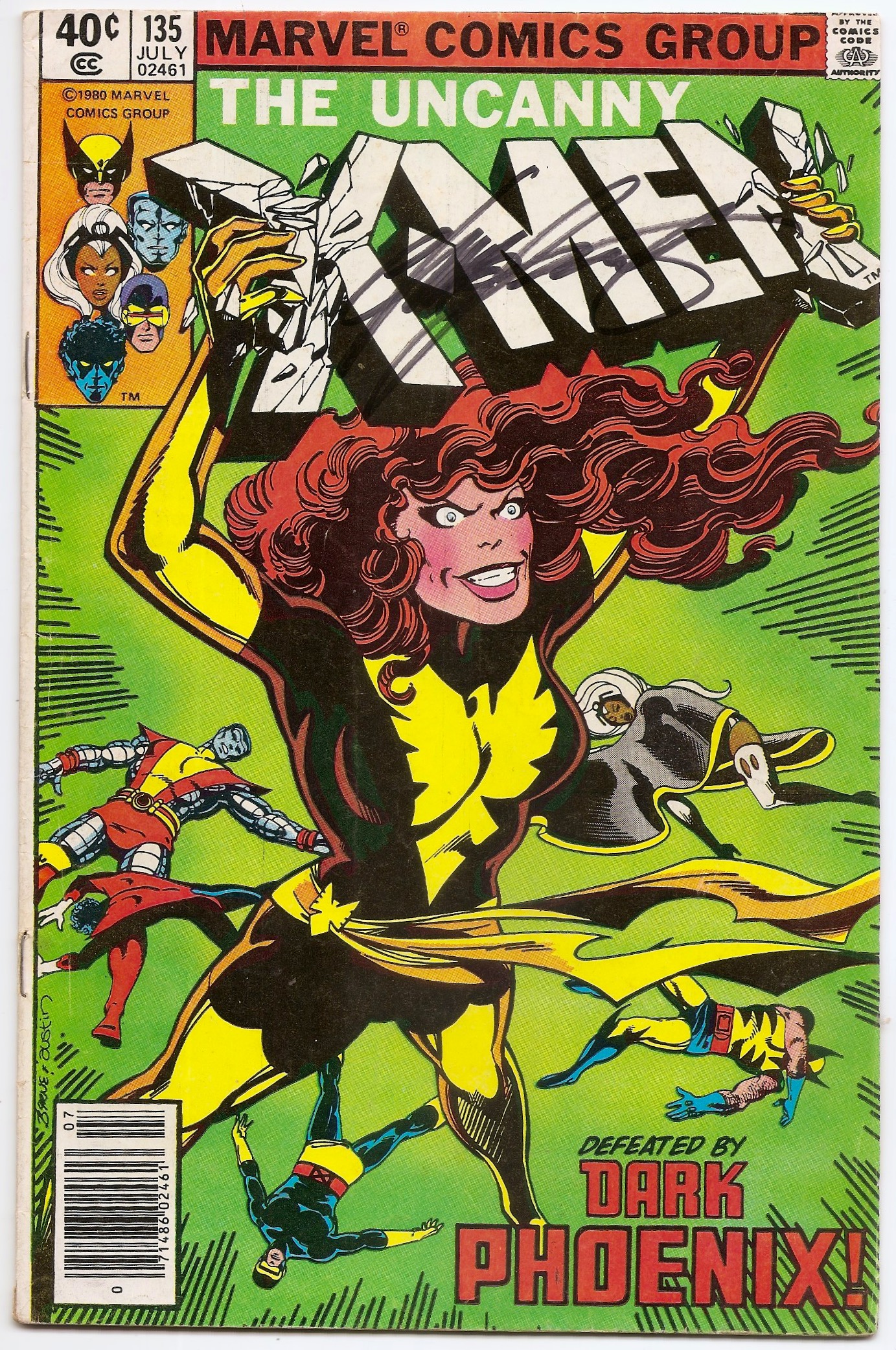
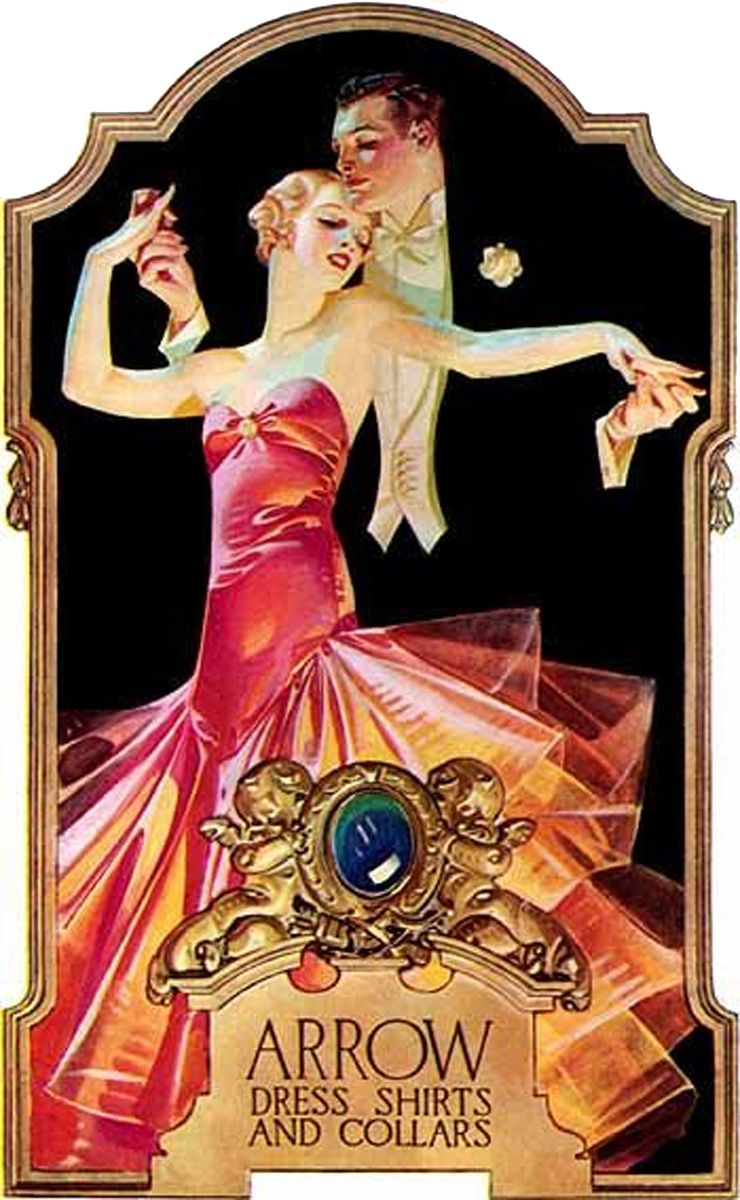
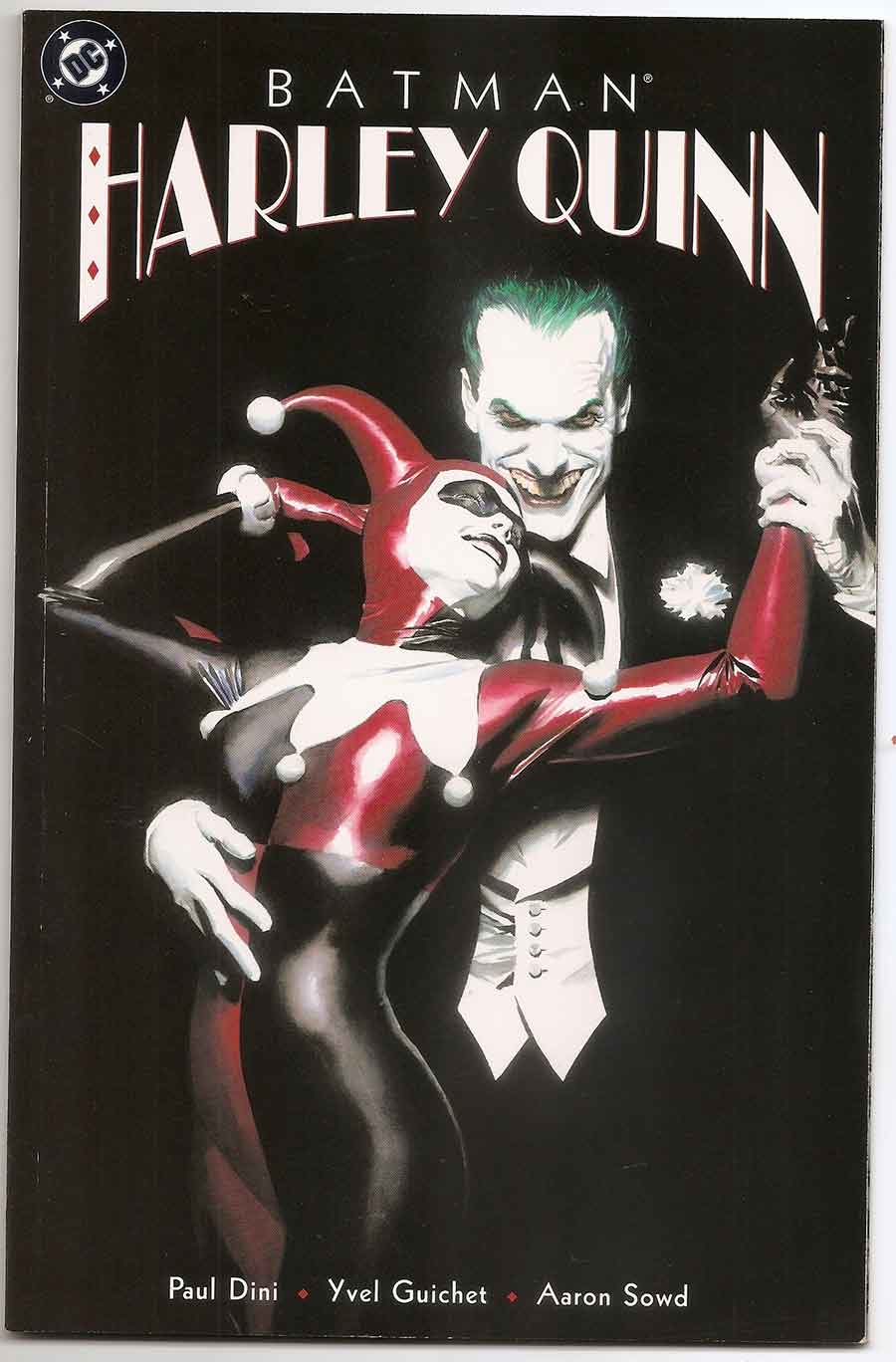
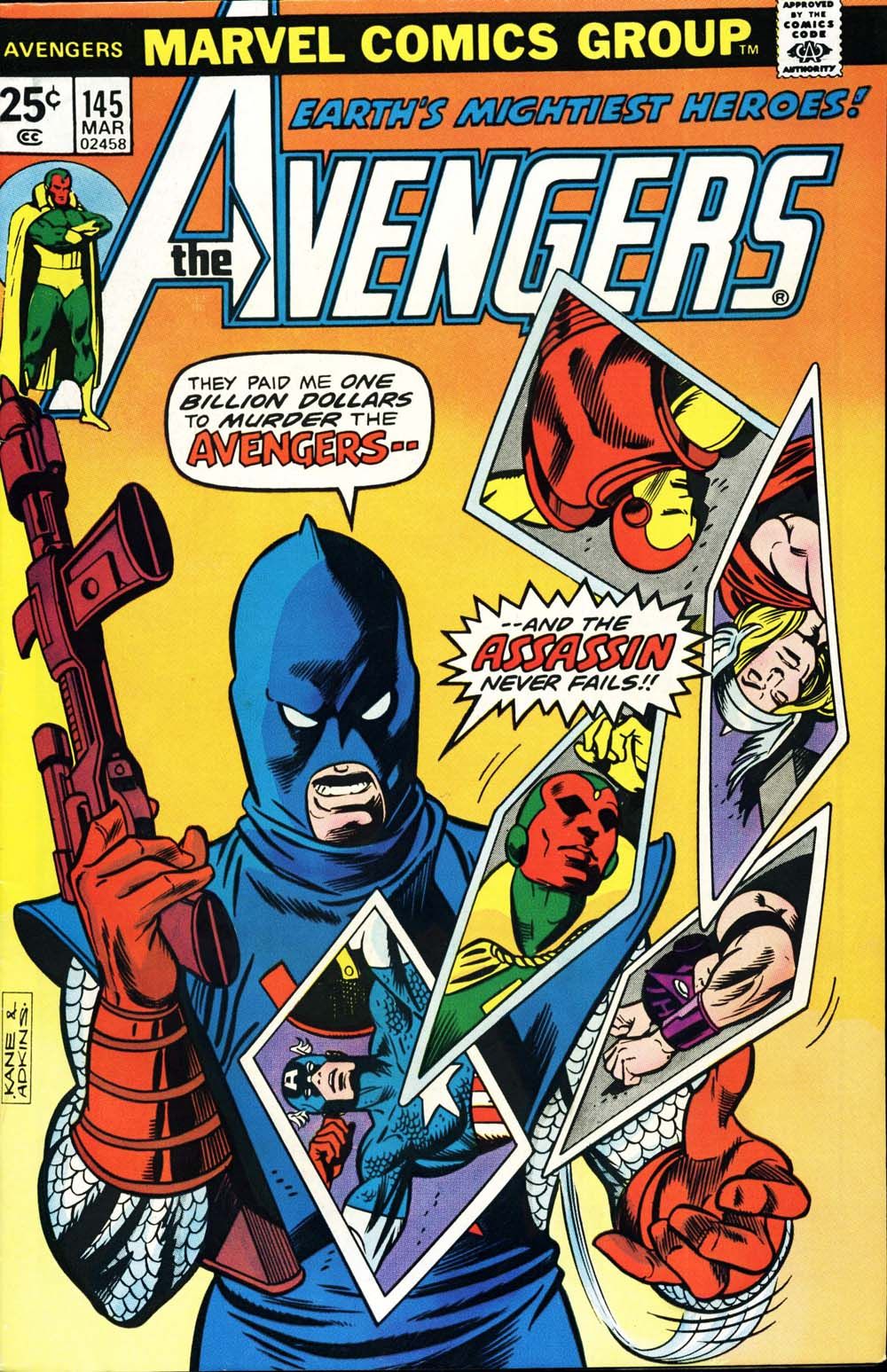
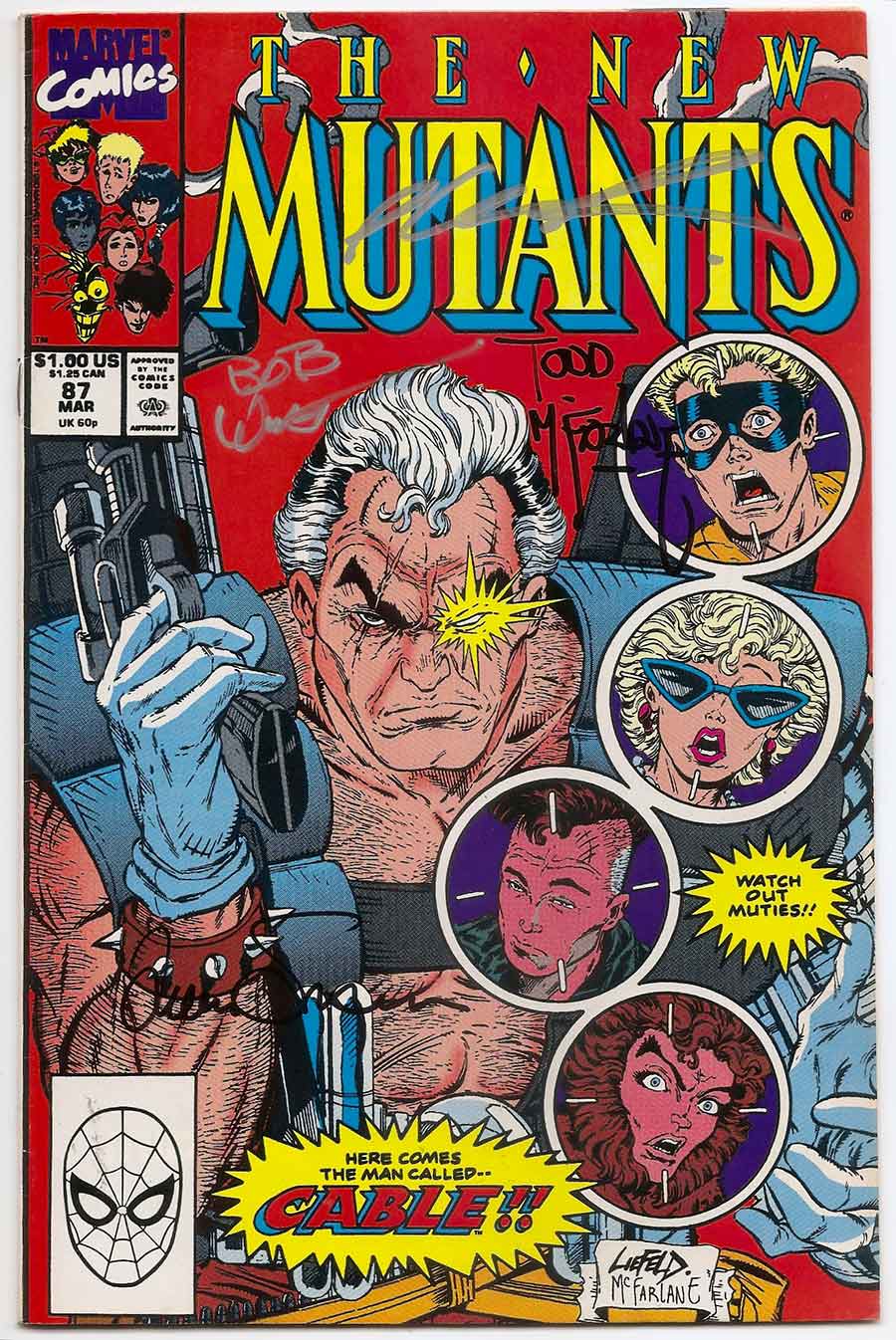
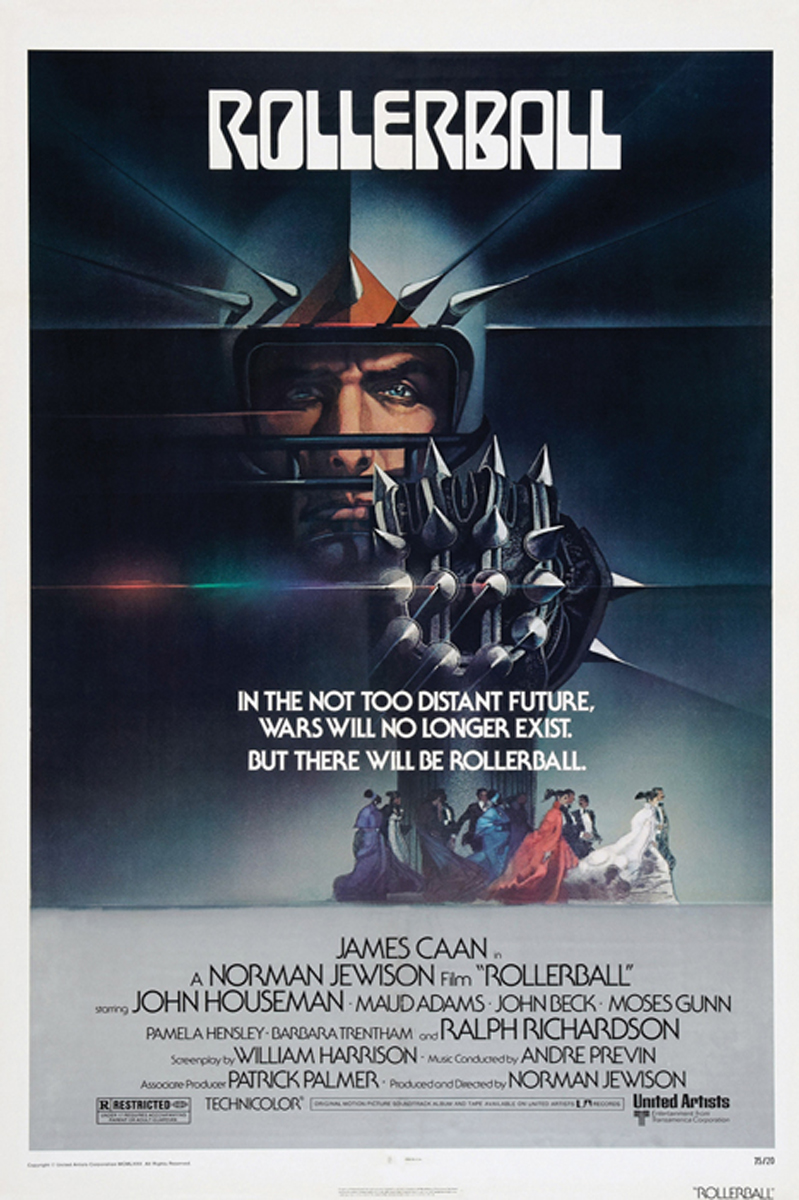
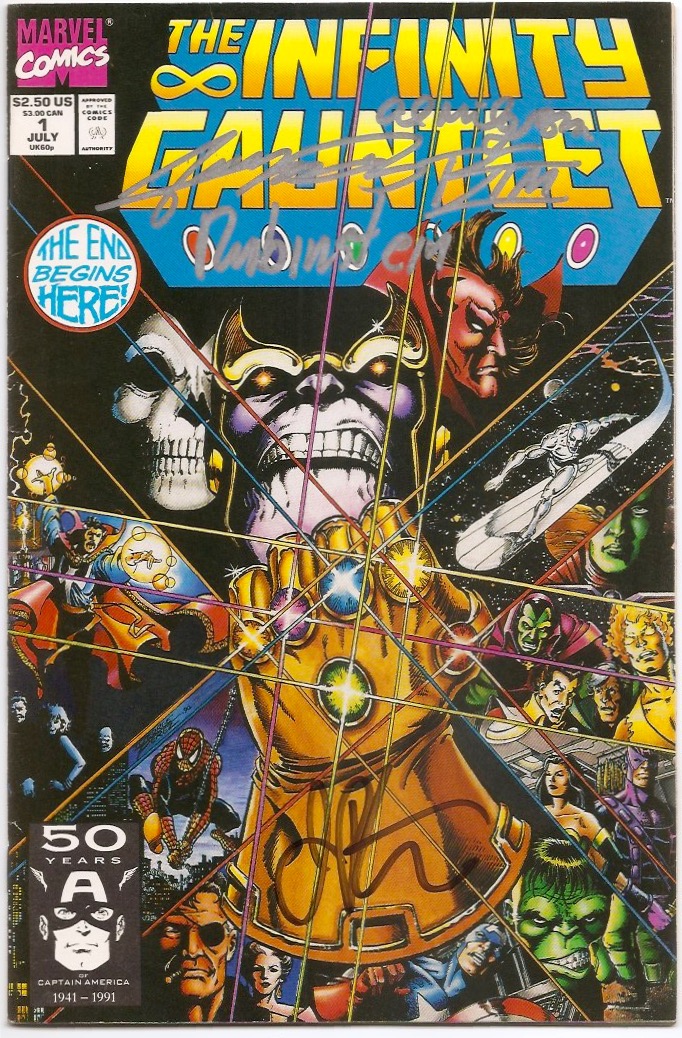

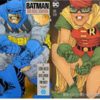






4 Comments
Lyle
Interesting topic, here’s another comic cover swipe, the tomb of Dracula #23 vs Batman #227, part of the Batman #227 cover is used on the cover of Tomb of Dracula #23. Thought I’d share.
Joshua
Makes sense. It works better as a Dracula cover anyway!
Zac
Most of these aren’t swipes, but homages to, where the reference is a purposeful nod to the original, whereas a swipe is an attempt to stealthily steal non-iconic images, trace over, and pass it off as original.
Of the stuff you posted, only the Punisher/Rai and Batman/Batman are likely swipes. For better examples of what swiping is, look up Roger Cruz vs. Joe Madureria
Joshua
Hi Zac,
Thanks for the comment. I picked these specific covers because they have become so famous to the artists the comic artists that illustrated them that the original source material and artist are not even known to many people. Not giving attribution is effectively stealing because you are presenting the idea, concept, composition as original. George Perez and Todd McFarlane are amazing artists in their own right but it just happens to be that these famous covers, which have become hallmarks in their career, happen to be swiped from earlier artists that weren’t given their proper credit. I’m sure they had no way of knowing that these covers would become iconic to their careers but nevertheless plenty of artists during this era attributed homages to the original artists. These examples were left unattributed, and frankly that’s just not the right thing to do.
As an artist myself who loves doing homage covers, I always attribute the original artists because it part of the fun of leaving your mark as part of the art history of the composition.
regards,
Joshua